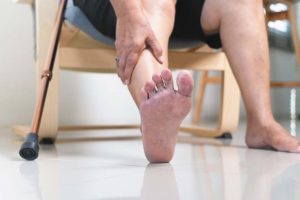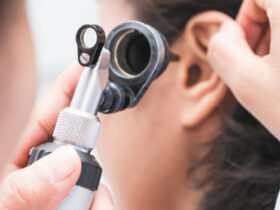By Dr. Isin Mustafa, DPM, MSHS, DABPM, FACPM
 PAD stands for Peripheral Arterial Disease. PAD is caused by blockages or narrowing of the arteries in the legs from a buildup of fatty deposits aka plaque buildup. This buildup of plaque hardens and narrows the arteries. This is called atherosclerosis and leads to a reduction of blood flow to the legs and feet. PAD is commonly seen in the legs, but it can also affect other arteries in the body, including arteries to the aorta, brain, arms, kidneys, and the stomach. Coronary artery disease or cardiovascular disease is when arteries in the heart are hardened or narrowed. People with PAD have a two-to-six times’ greater chance of death from a heart attack or stroke. PAD and diabetes are the leading causes of foot or leg amputations in the United States.
PAD stands for Peripheral Arterial Disease. PAD is caused by blockages or narrowing of the arteries in the legs from a buildup of fatty deposits aka plaque buildup. This buildup of plaque hardens and narrows the arteries. This is called atherosclerosis and leads to a reduction of blood flow to the legs and feet. PAD is commonly seen in the legs, but it can also affect other arteries in the body, including arteries to the aorta, brain, arms, kidneys, and the stomach. Coronary artery disease or cardiovascular disease is when arteries in the heart are hardened or narrowed. People with PAD have a two-to-six times’ greater chance of death from a heart attack or stroke. PAD and diabetes are the leading causes of foot or leg amputations in the United States.
Risk factors
• Smoking
• High Cholesterol
• High Blood Pressure
• Physical inactivity
• Obesity
• Diabetes
Symptoms
• Fatigue, tiredness, or pain in your legs, thighs, or buttocks that happens when you walk and goes away with rest.
• Foot or toe pain at rest that often disturbs your sleep.
• Skin wounds or ulcers on your feet or toes that are slow to heal or fail to heel
• Not everyone will experience these classic symptoms such as cramping, pain or fatigue known as claudication
When to see a professional
Do not ignore leg pain. It is important to discuss any leg or thigh pain with your podiatric physician. Early detection of PAD can offer an opportunity to treat risk factors that can slow the progression of the disease and decrease the chance of heart attack and stroke.
Diagnosis and Treatment
A simple test known as ABI’s or ankle-brachial index can be ordered for evaluation of your circulation. It compares the blood pressure in your ankles with the blood pressure in your arm. If your ABI is abnormal, your physician can order other tests to determine the extent of your PAD.
PAD can be treated with lifestyle changes, medicines, and surgical procedures if necessary. Medical treatment options include:
• Programs to stop smoking
• Blood pressure control
• Lowering cholesterol
• Manage high blood sugar (diabetes)
• Medications to prevent clotting
• Healthy diet
• Exercise program
A variety of surgical treatment options are available depending on the location and severity of the artery blockage. Your physician can refer you to the appropriate specialist for these procedures such as a vascular surgeon.
Disclaimer: This content is not intended to be a substitute for professional medical advice, diagnosis, or treatment. Always seek the advice of your physician or other qualified health care provider with any questions you may have regarding a medical condition.
Isin Mustafa, DPM, is a Podiatrist at Family Foot & Leg Centers in Port Charlotte, FL. She is a Fellow of the American College of Foot & Ankle Surgeons. Call 239-430-3668 or visit www.NaplesPodiatrist.com to make an appointment. Visit FootHealthFacts.org to learn more about foot and ankle conditions.
Isin Mustafa, DPM
3161 Harbor Blvd, Suite B
Port Charlotte, FL 33952
(239) 430 – 3668 (FOOT)
www.NaplesPodiatrist.com








